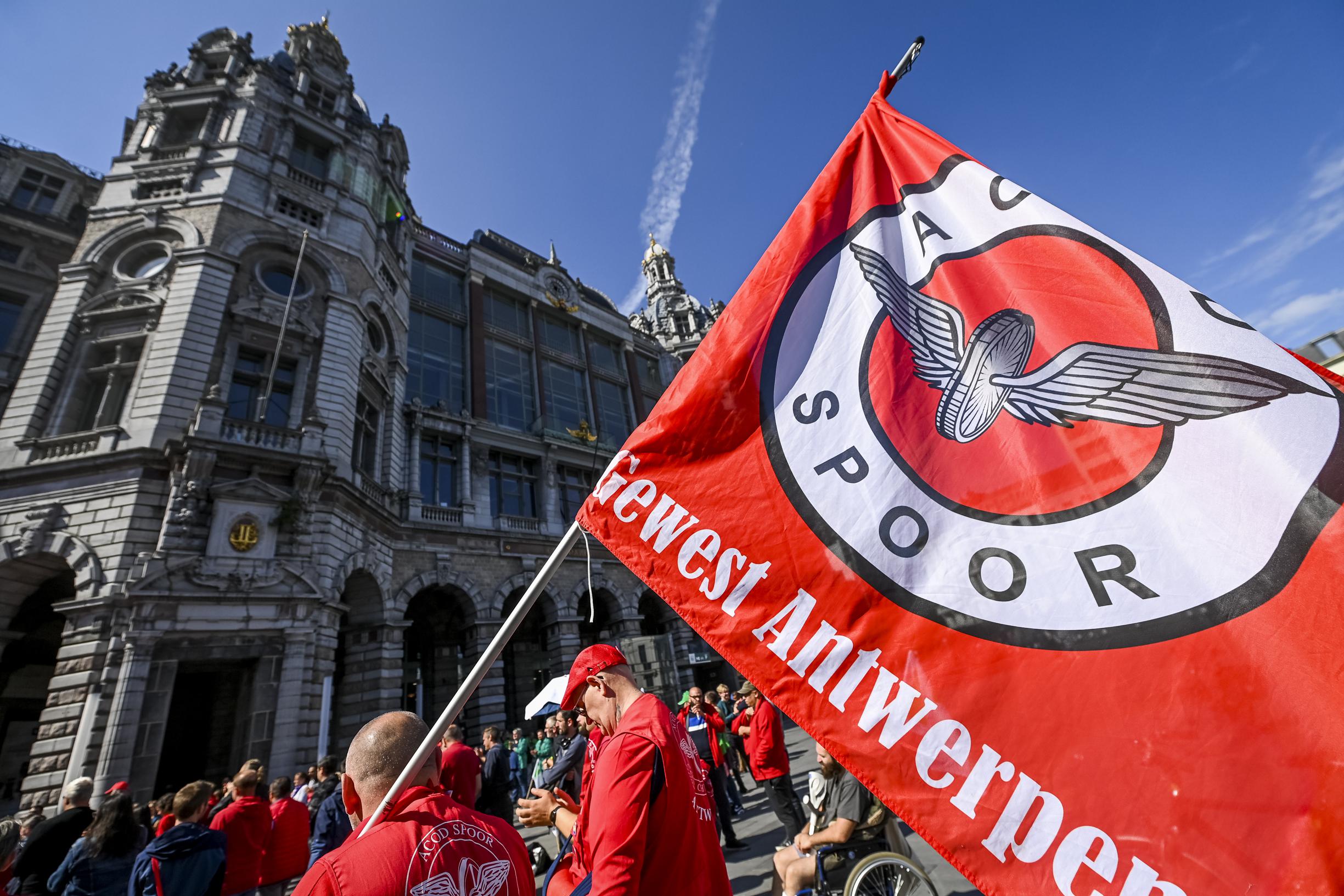The National Strike Day is felt in many ways. The VRT has a limited offer on radio and television and public transport is severely disrupted. The action day is hardly noticeable on the road.
–
Less news
On the radio stations of the public broadcaster, the morning block started at 7 o’clock, an hour later than usual. Only music has been played since 9 am, until 4 pm, when the shortened evening block starts. There are news bulletins at 7, 8, 12, 13, 5 and 6 pm.
All newscasts on One will also be shortened. There will be no ‘Home’ tonight, only programs that have been recorded in advance will be shown on the screen. There will be a broadcast of this on Canvas tonight the Queen Elisabeth Competition.
– Photo: BELGA
A strike picket takes over the entrance gate of the VRT buildings on Reyerslaan in Brussels on Tuesday. ‘We will stop the demolition of the VRT’, a banner reads.
Quarter trains, only one metro line
There is a lot of hindrance on public transport. Only a quarter of the trains drives. One in three of the IC trains between the major cities runs. In addition, one in five suburban S trains and L trains runs. Most P trains, which only run during the morning and evening rush hours, do not run. There are no trains in the provinces of Liège, Luxembourg and Namur. If you still want to ride the train, it is best to first look at the alternative train service on the NMBS website.
During the strike, the screens in the stations only show the trains that are running. Train traffic will return to normal from Wednesday morning, 1 June.
Bee The line On average, six out of ten trams and buses leave. 65 percent drive in West Flanders and Flemish Brabant. In Limburg it is 60 percent and in Antwerp 55 percent. The worst affected province is East Flanders, where half of the buses and trams end. As far as the coastal tram is concerned, three quarters run out. Travelers can consult the alternative services via the route planner on the De Lijn website.
In Brussels there are ‘very serious disruptions’ at the STIB† Only one of the four metro lines is served, line 1. With the trams, lines 3, 4, 7, 8, 9, 51 and 92 are in service, according to an update of the situation on the network at 7.30 am. The buses also run on lines 12, 34, 46, 53, 56, 59, 65, 71, 74, 87 (extended to Zwarte Vijvers), 88 and 95.
‘All other lines are not running today’, the STIB concludes. Travelers can consult the STIB mobile app to find other ways to travel in the capital during the strike day.
The ferry services have also been disrupted: the service in Ostend had come to a halt this morning, and the ferry service in Antwerp between Linkeroever and the Steen would operate until 3 p.m., then not anymore.
On the road there is not much to notice of the action day. At the peak of the morning rush hour, just after 8 a.m., there was 160 kilometers of traffic jams on the Flemish highways, which is normal for a working day. So it seems that many employees have chosen to work from home.
Impact on education still unclear
The total impact of the strike day on education is not clear. The city of Antwerp has announced that there are no lessons in urban education in 14 percent of primary schools, but emergency care is provided. Six of the sixteen nurseries are also closed and the ten others are only open to part of the living groups. In Ghent – where ten percent of city staff are on strike – four urban daycare centers are closed and 28 others have limited opening hours.
There is also disruption at Bpost. Part of the mail cannot be distributed, especially in Wallonia, more specifically in the vicinity of Liège. Because the sorting centers are also on strike, there is also a risk that there will be an impact in the coming days. In Flanders, about 90 percent of the rounds are carried out on Tuesday and 96 percent of the offices are open. Only 35% of the offices can be found in Brussels.
There are also strikes in prisons. ‘Almost three quarters of our people are participating in the day of action today’, says Robby De Kaey, staff member of ACOD Justice. ‘In some places there are even more.’ Where necessary, police officers are called in. However, only the detainees in the prisons of Dendermonde, Mechelen and Leuven Central will be allowed to go outside for a walk.
The lock keepers also went on strike. The Flemish Waterway reports that 75 ships are waiting to continue sailing. Shipping is also experiencing disruption in the ports of Antwerp and Zeebrugge.
–


